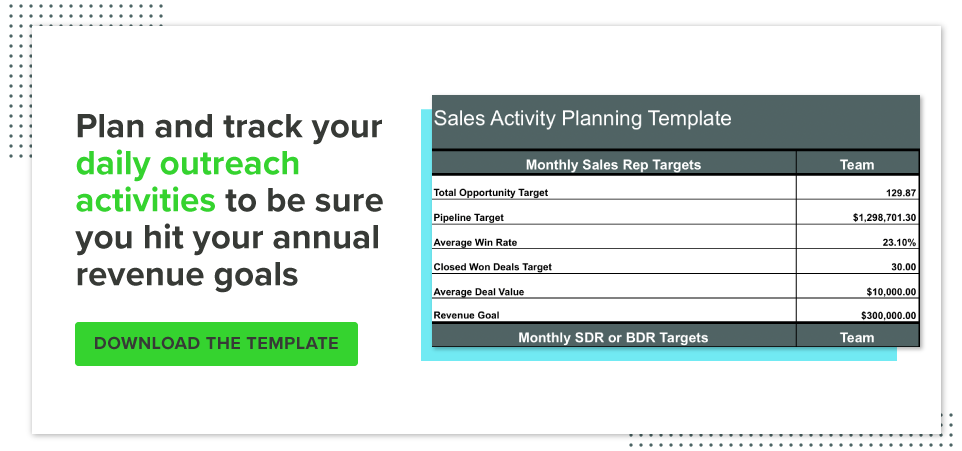The discovery call is the first interaction you’ll have face-to-face (or over video) with a prospect. It provides an opportunity for you to get to know the prospect, their company and whether or not they’ll be a good fit for progressing forward in the sales process.
Over the course of a discovery call you’ll want to:
- Determine fit beyond just firmographics — Dive into their budget, timeline and decision-making authority
- Answer any initial questions the prospect has — They’ve probably explored your website already and might have already described their challenge through a form. So, address any high-level questions they have about your company, your solution and your ability to help them right off the bat
- Learn about their company — Before jumping into details about the initiatives they’re working on, get an understanding of the prospect’s company, their company’s goals and how your solution can impact the organization at a high level
- Book the next meeting — If it’s a good fit, pull up your calendar and schedule the next meeting while you’re still on the call. In addition to that, you should also educate them on what the next steps will be and what they can expect for the rest of the sales process
How to Run a Discovery Call
Call structure
Discovery calls are relatively short, but there’s a lot of ground for you to cover. So, it’s important for you to plan out the structure of your call in advance to make sure nothing gets forgotten.
Start the call out by introducing yourself and anyone else you brought on the call with you. Explain who you are and what your role is. Then ask the prospect those same questions. Don’t rush through this step because it can help build rapport.
After introductions, outline the agenda for the call. Share with the prospect what you hope to accomplish on the call, and then ask them what they want to achieve. Establishing goals for the call at the start can help you ensure there’s an even give and get, and that everyone gets what they need from the discussion.
Next, start asking the prospects questions about their situation. Open by discussing high-level growth goals, and then work to dive deeper in the specific challenge that caused them to reach out to your company.
Once you have a good sense of their goals and challenges, then open the floor for them to ask questions about your company and your solution. You can start by giving a high-level overview of your value proposition, and then ask if they have specific questions.
Once everyone’s questions have been answered, the last thing to do is introduce next steps.
If you think it’s a good fit, express that and then share what the rest of the sales process will look like. For example, maybe you’ll be doing an assessment or a demo. Describe what that will look like and book your next meeting.
If you don’t think a prospect is a good fit to work with you, let them know that. You can position it as, “We won’t be the best solution for you,” followed by an explanation why. While you want to be friendly about this so you don’t burn any bridges, it’s also important to make it clear that you’re parting ways so they don’t leave the call expecting a follow-up.
Send reminders and follow-up
Sending a reminder message the morning of the call will lead to a much higher attendance rate for your discovery calls. If you use HubSpot, you can automate this as part of your meetings link.
Similarly, you should send a follow-up message after the call summarizing what was discussed and what the next steps are. This follow-up is especially important if the next steps take place more than two business days after the initial call or if you weren’t able to book the next meeting.
However, even if those things aren’t the case, following up with a summary provides them a resource they can refer back to because they probably won’t remember everything.
Record the discovery call
Just like your prospects, you’ll forget things too. As you’re working on future details of the sales, being able to go back and listen to the original call can be really beneficial.
You can use the recording to pull specific details about their goals and challenges into your demo or solution overview and make sure that everything you present is very relevant to them.
The Takeaway
At New Breed, we consider the discovery call to be the most important part of the sales process.
A good discovery call can build trust early on and set you up for success throughout the rest of your sales process. Meanwhile a bad discovery call can be awkward and bring your sales process to a halt before it’s even begun.
At a very high level, discovery calls should be used for qualification, information exchange and setting expectations for what comes next. If you can accomplish those three things, the call has been successful and both parties should leave understanding each other and how to translate the conversation into action moving forward.





